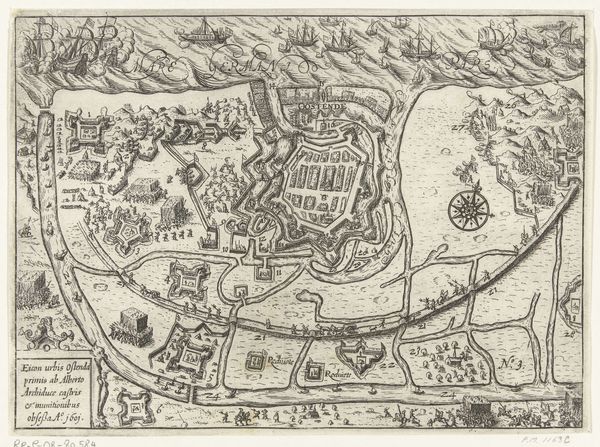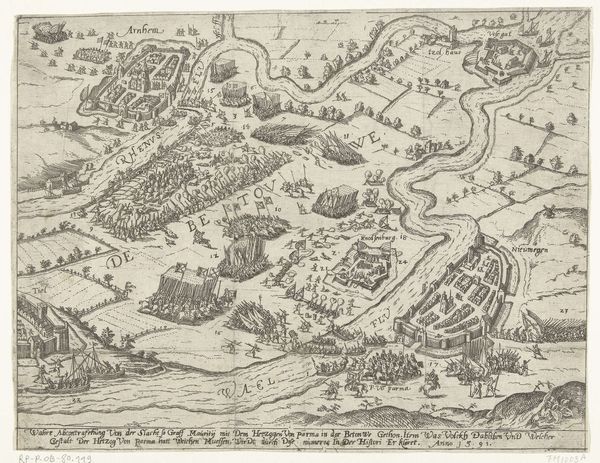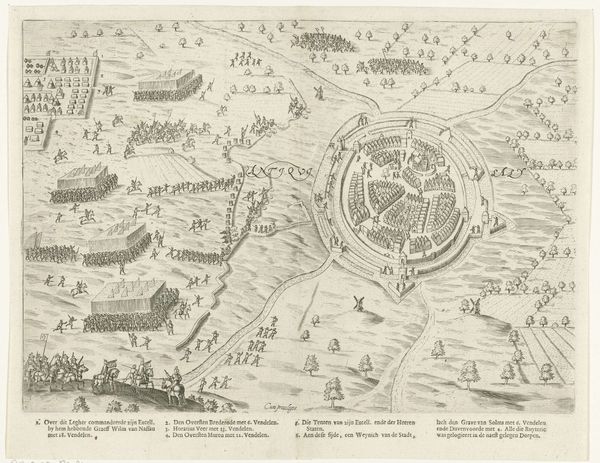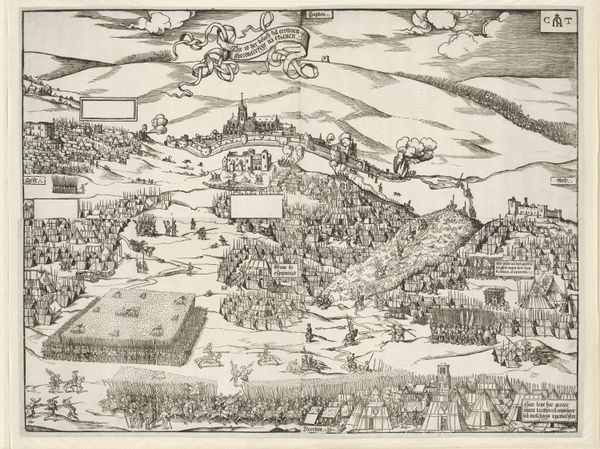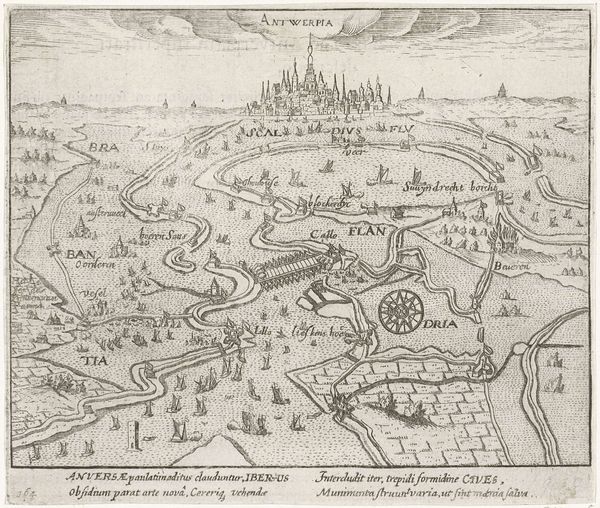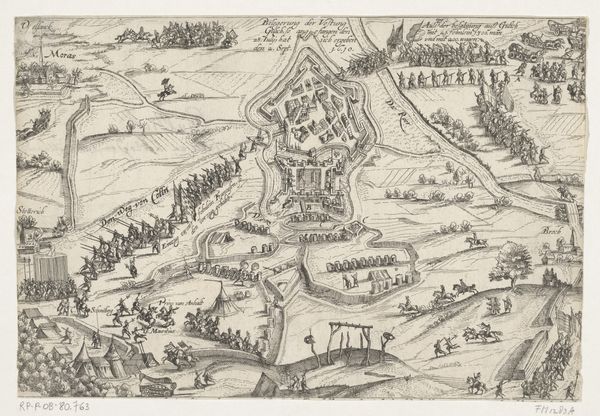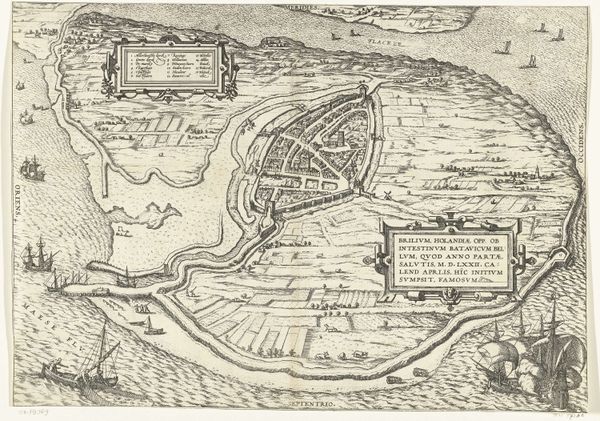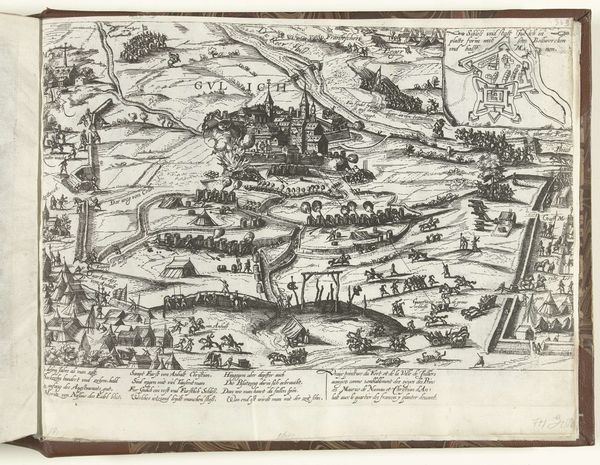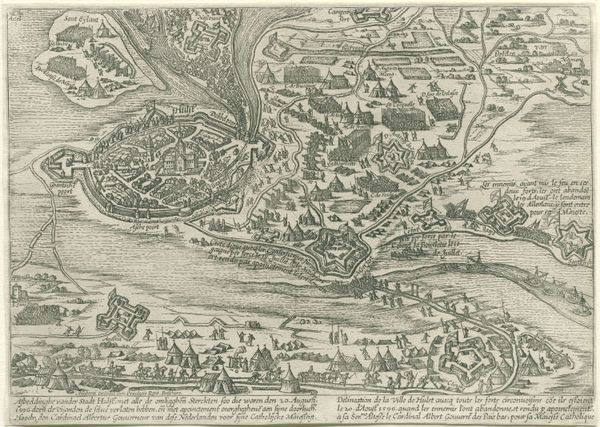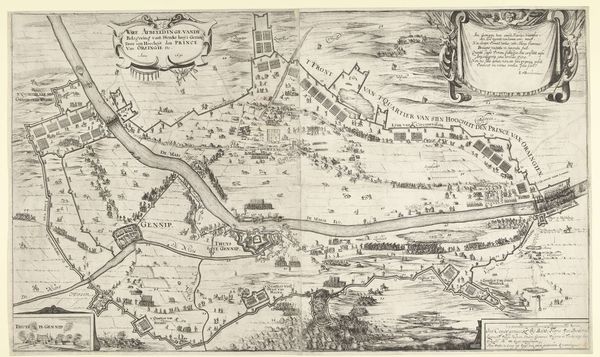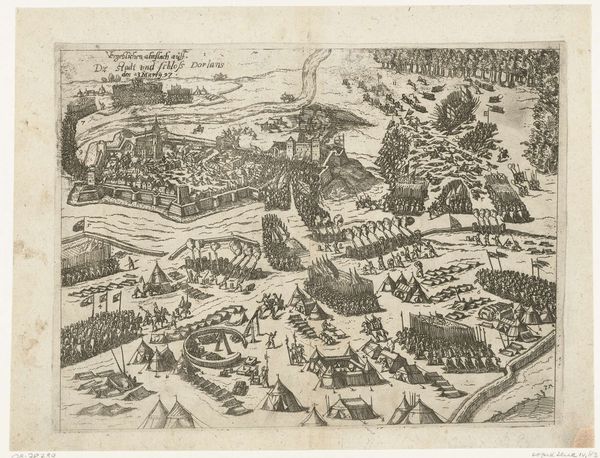
print, etching, engraving
#
narrative-art
#
dutch-golden-age
# print
#
etching
#
landscape
#
perspective
#
line
#
cityscape
#
history-painting
#
engraving
Dimensions: height 263 mm, width 351 mm
Copyright: Rijks Museum: Open Domain
Coenraet Decker created this map depicting the relief of Leiden in 1574, likely using an engraving technique. This process involves carving lines into a metal plate, applying ink, and then pressing paper onto the plate to transfer the image. Engraving demands a high degree of skill, and a labor-intensive process of design and carving. The clarity of line and detail we see here reflects countless hours of work. The act of engraving transforms a narrative – the historical event of Leiden's relief – into a tangible, reproducible form. This allowed for widespread dissemination of information and propaganda. The choice of printmaking aligns with the democratizing potential of the medium. In contrast to unique paintings, prints could reach a broader audience, fostering a sense of shared identity and collective memory. By focusing on the material and making of this map, we can appreciate how it served as a powerful tool to shape public perception and commemorate significant historical events. It reminds us that every artwork is the result of a specific production process, embedded with cultural and social meaning.
Comments
No comments
Be the first to comment and join the conversation on the ultimate creative platform.

